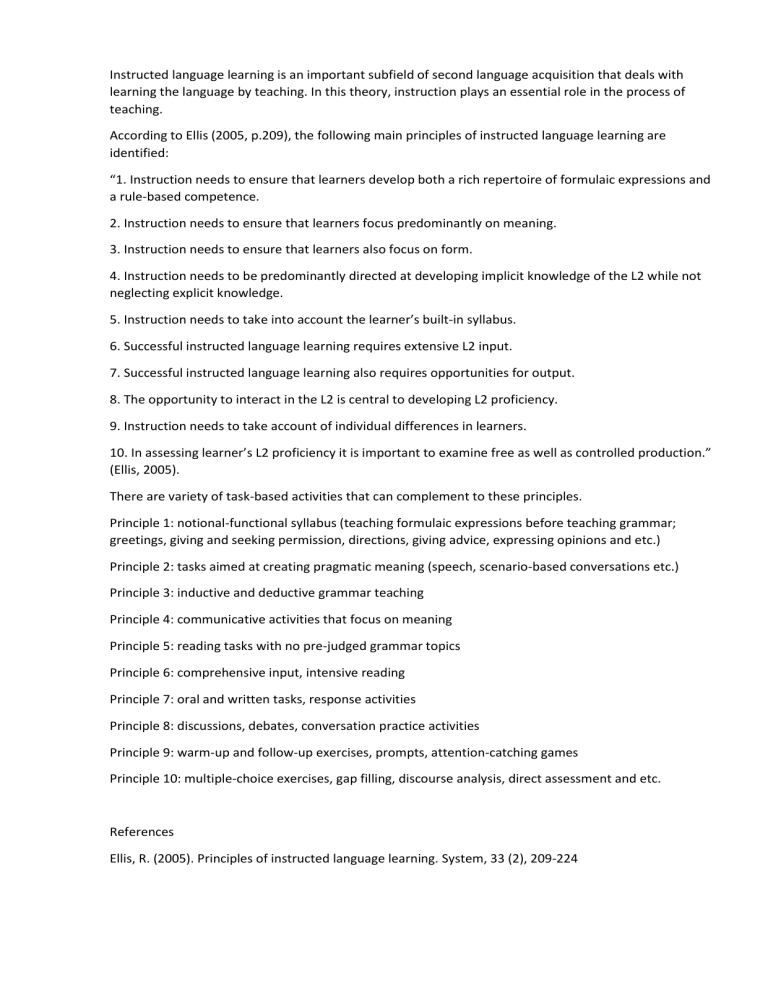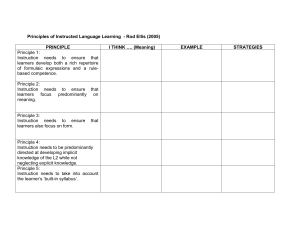
Instructed language learning is an important subfield of second language acquisition that deals with learning the language by teaching. In this theory, instruction plays an essential role in the process of teaching. According to Ellis (2005, p.209), the following main principles of instructed language learning are identified: “1. Instruction needs to ensure that learners develop both a rich repertoire of formulaic expressions and a rule-based competence. 2. Instruction needs to ensure that learners focus predominantly on meaning. 3. Instruction needs to ensure that learners also focus on form. 4. Instruction needs to be predominantly directed at developing implicit knowledge of the L2 while not neglecting explicit knowledge. 5. Instruction needs to take into account the learner’s built-in syllabus. 6. Successful instructed language learning requires extensive L2 input. 7. Successful instructed language learning also requires opportunities for output. 8. The opportunity to interact in the L2 is central to developing L2 proficiency. 9. Instruction needs to take account of individual differences in learners. 10. In assessing learner’s L2 proficiency it is important to examine free as well as controlled production.” (Ellis, 2005). There are variety of task-based activities that can complement to these principles. Principle 1: notional-functional syllabus (teaching formulaic expressions before teaching grammar; greetings, giving and seeking permission, directions, giving advice, expressing opinions and etc.) Principle 2: tasks aimed at creating pragmatic meaning (speech, scenario-based conversations etc.) Principle 3: inductive and deductive grammar teaching Principle 4: communicative activities that focus on meaning Principle 5: reading tasks with no pre-judged grammar topics Principle 6: comprehensive input, intensive reading Principle 7: oral and written tasks, response activities Principle 8: discussions, debates, conversation practice activities Principle 9: warm-up and follow-up exercises, prompts, attention-catching games Principle 10: multiple-choice exercises, gap filling, discourse analysis, direct assessment and etc. References Ellis, R. (2005). Principles of instructed language learning. System, 33 (2), 209-224


